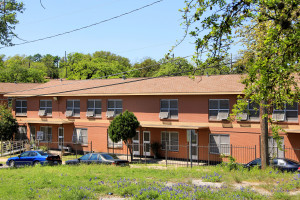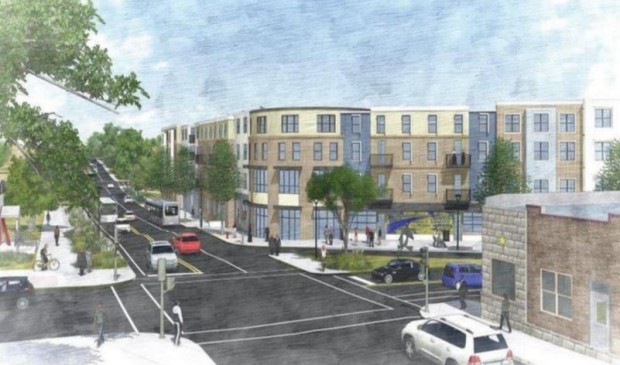Rosewood Courts’ historic zoning back in play
Friday, February 26, 2016 by
Elizabeth Pagano It was far from clear what had happened after a flurry of amendments and votes. But when the dust settled, the question of historic zoning for Rosewood Courts remained open.
City Council voted 8-0-3 to initiate historic zoning on Rosewood Courts, with Council members Don Zimmerman, Sheri Gallo and Pio Renteria abstaining. That vote will allow the Historic Landmark Commission to weigh in on – and perhaps thwart – a Housing Authority of the City of Austin plan to preserve six of the original 1939 buildings and raze the rest to make way for a mixed-use housing project at Rosewood and Chestnut avenues.

It will be the second time the Historic Landmark Commission considers whether the first African-American housing project in the country warrants individual landmarking. The first time, in August, a bare-bones commission voted 3-3 to initiate historic zoning, which was not enough to move it on to Council. Since then, Council Member Ora Houston took matters into her own hands, writing a resolution to restart the historic zoning process.
For historic designation, Council will have to approve the historic zoning again. And, most likely, it will have to approve it with a supermajority of nine votes because HACA (which owns the property) opposes the change.
HACA Executive Vice President Sylvia Blanco reiterated her support for the preservation of six buildings but said the plan to preserve the entire property was “an overreach.”
Blanco emphasized the current state of the “barracks-style property” and the challenges it faces. She explained that the new $60 million mixed-use redevelopment plan would preserve six original buildings, replace 124 affordable housing units with 200 units (serving 76 more families) and create a commemorative Emancipation Park. On the other hand, said Blanco, if the property were brought up to code, it would lose 41 units and serve fewer families.
“HACA is committed to historic preservation, even though historic preservation is not justified or warranted based on the physical integrity of the site’s structures,” said Blanco. “People who had never set foot (in) or given a second thought to Rosewood Courts appear to be engaged in an effort to tie down this property and intentionally hinder significant improvements and the quality of life for the residents of this property.”
Blanco was supported by current residents and housing advocate Ruby Roa, who told Council that they preferred the option of newer, more plentiful affordable housing over historic landmarking for Rosewood Courts.
But there were those, including Houston, who passionately advocated for preservation for the housing project.
“What we want is that people who come to the city, long after I’m dead and gone, know that on that property, negroes lived. And not only did they live there, they thrived there,” said Houston. “I think the reason they chose Rosewood was because we’re so few in this community. If they tried to do something to Santa Rita, the Latinos and Hispanics would be up in arms. But there are so few of us in this town that it’s hard to mount that kind of opposition.”
Rendering of Rosewood Courts project courtesy of HACA; photo by Larry D. Moore [CC BY-SA 3.0 or GFDL], via Wikimedia Commons.
This story has been correct due to a basic math error (“74” is now “76”.)
You're a community leader
And we’re honored you look to us for serious, in-depth news. You know a strong community needs local and dedicated watchdog reporting. We’re here for you and that won’t change. Now will you take the powerful next step and support our nonprofit news organization?












